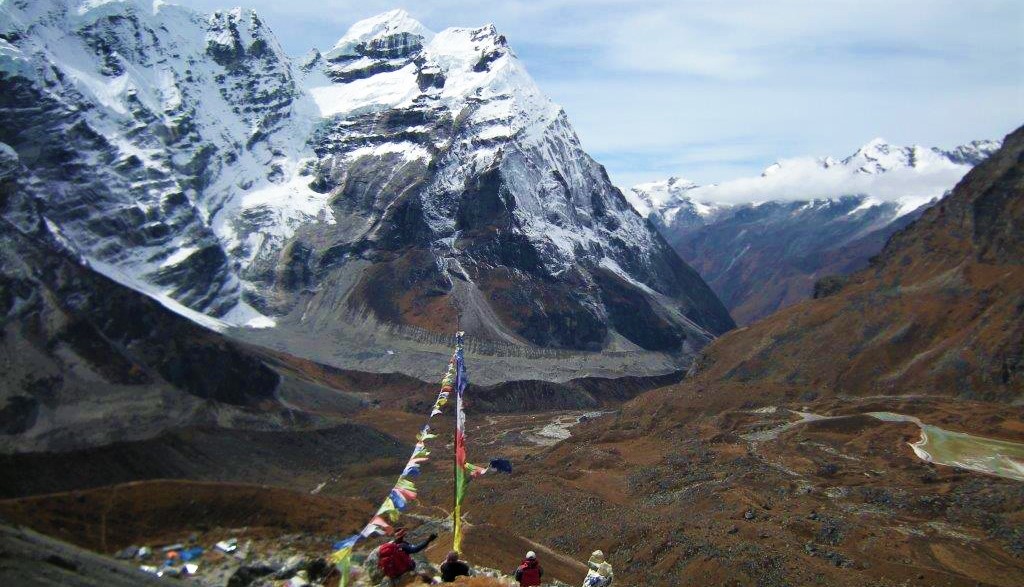Interesting things about Hinku Valley | All you need to know about Hinku Valley
Hinku Valley is a picturesque valley situated in both Solukhumbu and Sankhuwasabha districts of Nepal, in the eastern part of the country. It lies to the north of the popular Everest region and is surrounded by some of the world's highest and most famous peaks, including Mount Everest, Cho Oyu, Lhotse, and Makalu. The valley is known for its stunning natural beauty, diverse landscapes, and opportunities for trekking and mountaineering.
Hinku Valley is located in the northeastern part of Nepal, within the Makalu Barun National Park. It is bordered by the Khumbu Valley to the south and the remote Hongu Valley to the north. Here's more information about Hinku Valley:
1. Trekking in Hinku Valley:
The Mera Peak trek is the main trekking attraction in Hinku Valley. It is a popular choice for adventurous trekkers looking to combine trekking and basic mountaineering. The trek begins with a flight from Kathmandu to Lukla and then follows a trail that passes through lush forests, charming villages, and high alpine landscapes. Trekkers cross high passes, including the Zatrwa La Pass, and reach the Mera Base Camp before ascending to the summit of Mera Peak. The trek provides stunning panoramic views of Everest, Makalu, Kanchenjunga, and other surrounding peaks.
2. Natural Beauty and Landscapes:
Hinku Valley showcases a variety of landscapes, each with its own unique beauty. The lower regions of the valley are covered in dense forests of rhododendron, pine, oak, and birch trees. As trekkers ascend higher, the vegetation becomes sparser, and alpine meadows with colorful wildflowers come into view. The valley is dotted with glacial lakes, such as the Panch Pokhari (Five Lakes), adding to the scenic charm of the region.
3. Wildlife and Flora:
Hinku Valley is part of the Sagarmatha National Park and Makalu Barun National Park, the protected areas known for their rich biodiversity. The region is home to diverse flora and fauna. The forests are inhabited by various wildlife species, including Himalayan thars, musk deer, red pandas, and different species of birds, including colorful pheasants. The higher altitudes are home to hardy alpine plants and unique high-altitude flowers like the blue poppy and edelweiss.
4. Culture and Communities:
The local communities of Hinku Valley, primarily the Sherpa and Rai people, have a rich cultural heritage. Sherpas, known for their mountaineering skills and warm hospitality, have a significant presence in the region. The villages along the trekking route offer insights into their traditional lifestyle, architecture, and religious practices. Trekkers can visit monasteries, interact with locals, and experience cultural festivities like Mani Rimdu, a Sherpa Buddhist festival.
5. Weather and Best Time to Visit:
Hinku Valley experiences a typical Himalayan climate, with distinct seasons. The pre-monsoon (spring) and post-monsoon (autumn) seasons are the best times to visit for trekking in Hinku Valley. During these seasons (March to May and September to November), the weather is generally stable, with clear skies and mild temperatures. The visibility is excellent, allowing trekkers to enjoy breathtaking mountain views. However, it's important to be prepared for colder temperatures and occasional snowfall at higher elevations.
6. Safety and Permits:
Trekking in Hinku Valley requires obtaining the necessary permits. These include the Sagarmatha National Park entry permit, Makalu Barun National Park entry permit and the Mera Peak climbing permit. It is advisable to trek with a licensed guide and to have proper travel insurance that covers high-altitude trekking and mountaineering activities. The guide ensures your safety, assists with navigation, and provides valuable insights into the local culture and environment.
7. Alternative Routes:
In addition to the Mera Peak trek, Hinku Valley offers alternative trekking routes for those looking for different experiences. One such route is the challenging Amphu Laptsa (Lapcha) Pass trek, which involves crossing a high pass connecting the Hinku Valley with the Imja Valley. This route is recommended for experienced trekkers with mountaineering skills.




.jpg)



